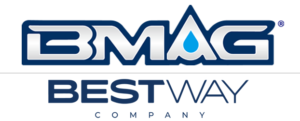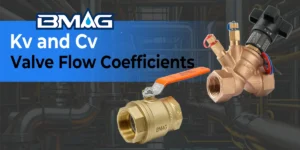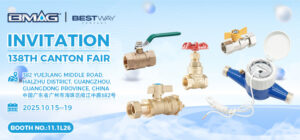Жез клапаны герметизациялау өнімділігі - ағып кетудің алдын алу және қауіпсіз болудың негізгі мүмкіндігі, Тиімді пайдалану. Клапан саласының мамандары үшін, understanding the rigors of sealing performance testing is crucial for sourcing reliable, high-quality brass valves.
Мазмұны
Ауыстыру1. Purpose of Brass Valve Sealing Performance Testing
The primary purpose of sealing performance testing is to verify the structural integrity and leak-tightness of a brass valve. This non-destructive testing process is a fundamental quality control step that ensures every valve meets its designed performance specifications. The key objectives include:

- Verifying Shell Integrity: Confirming that the valve body and bonnet are free from porosity, cracks, or other defects that could lead to external leakage under pressure.
- Validating Seat and Closure Seal: Ensuring the internal sealing mechanism (e.Г., the ball and seats in a ball valve) provides a tight shut-off, preventing leakage across the valve when in the closed position.
- Guaranteeing Safety and Reliability: Ultimately, these tests ensure the valve will perform safely and reliably in its intended service, preventing potential environmental damage, or safety hazards associated with fluid leakage.
2. International Standards for Valve Testing
To ensure uniformity and reliability, sealing performance tests are governed by stringent international standards. The most prominent standards include:
- Апи 598: Valve Inspection and Testing: An American Petroleum Institute standard widely used in the oil and gas and petrochemical industries. It specifies requirements and standards for shell tests, backseat tests, and seat closure tests for various valve types.
- ISO 5208: Industrial Valves – Pressure Testing of Metallic Valves: A globally recognized standard from the International Organization for Standardization. It defines a series of production tests and specifies permissible leakage rates (e.Г., Rate A, B, C) for valve seat closure.
- -Да 12266-1: Industrial Valves – Testing of Metallic Valves – Part 1: Pressure Tests, Test Procedures and Acceptance Criteria: A European standard that is harmonized with ISO 5208, providing a framework for testing requirements for valves used within the European Union.
These standards dictate critical test parameters, including test pressures, test durations, test fluids, and maximum allowable leakage rates.
3. Brass Valve Sealing Testing Methods
Two primary methods are employed for pressure testing the sealing performance of brass valves: hydrostatic testing жіне pneumatic testing.
Hydrostatic Testing
This is the most common method, utilizing a liquid (typically water, often with a corrosion inhibitor) as the test medium.
- Principle: The valve is filled with the liquid, and all air is vented. Pressure is then applied, typically at 1.1 to 1.5 times the valve’s maximum rated working pressure (including brass valve seat vs. shell).
- Advantages: It is safer than pneumatic testing because liquids are nearly incompressible.
Pneumatic Testing
This method uses a gas, such as compressed air or an inert gas like nitrogen, as the test medium.
- Principle: The valve is subjected to pressurized gas, and leakage is detected by submerging the valve in water and watching for bubbles or by using a leak detection solution.
- Advantages: Higher sensitivity for detecting minute leaks and easy to observe leakage.
What’s the Difference Between Brass Valve Hydrostatic жіне Pneumatic Testing?
Regarding sensitivity, pneumatic testing is far superior to hydrostatic testing for detecting fine leaks. This is primarily due to the physical properties of the test media. Gas molecules are significantly smaller and have a much lower viscosity than water molecules, allowing them to easily penetrate microscopic leak paths, such as tiny cracks, material porosity, or subtle imperfections in the sealing surfaces.
Conversely, water molecules are larger, and their higher surface tension can effectively “bridge” or plug these minute openings, preventing a visible leak. Сондықтан, a valve might pass a hydrostatic test but fail a pneumatic one. While a hydrostatic test is effective for finding major (“gross”) leaks and confirming structural strength, a pneumatic test is the definitive method for verifying the high-integrity sealing required in gas service or other critical applications where even the smallest leak is unacceptable.
| Parameter | Hydrostatic Test | Pneumatic Test |
| Primary Focus | Structural Strength & Тұтастық | Sealing Precision & Leakage Rate |
| Target Components | Pressure-containing parts (e.Г., body, bonnet) | Sealing surfaces (e.Г., seat, disc) |
| Test Medium | Liquid (e.Г., water) – Incompressible | Газ (e.Г., ауа, азот) – Compressible |
| Safety | Биік | Low (Risk of explosion) |
| Sensitivity | Low | Биік |
4. Brass Valve Sealing Performance Testing Equipment
Conducting accurate Brass Valve sealing performance tests requires specialized equipment.
Brass Valve Pressure Test Bench, which consists of a compressor, a pressure control and measurement system, sealing plates and adapters, and a leakage measurement device.
5. Brass Valve Sealing Testing Process
While the exact parameters vary by standard and valve type, a typical testing sequence involves the following steps:
- Visual Inspection: Before any pressure testing, the valve is visually inspected for any casting defects, machining errors, or cracks.
- Mounting the Valve: The valve is securely mounted on the test bench. For shell tests, the valve is typically in a partially open position. For seat tests, the valve is fully closed to the specified torque.
- Shell Test (Hydrostatic):
- The valve is filled with water, ensuring all air is purged.
- The pressure is gradually increased to the specified shell test pressure (e.Г., 1.5 times the rated pressure).
- This pressure is held for a minimum duration as specified by the standard (e.Г., 60 seconds for a 2-inch valve).
- The entire external surface of the valve body and bonnet joint is visually inspected for any signs of leakage.
- Seat Closure Test (Hydrostatic or Pneumatic):
- Pressure is applied to one side of the closed valve.
- The pressure is raised to the specified seat test pressure (e.Г., 1.5 times the rated pressure).
- The pressure is held for the specified duration.
- The downstream (outlet) side of the valve is monitored for leakage.
- Check whether the brass valve is leaking.
- Depressurization and Reporting: After the brass valve tests are complete, the valve is safely depressurized. All test parameters (valve details, test pressures, durations, fluids, and results) are formally documented in a test report.

6. Record the Brass Valve Test Report
Meticulous documentation is a critical component of the quality assurance process. For each valve tested, the following information must be recorded:
- Valve Identification: Model number, size, pressure class, and a unique serial number.
- Test Standard Used: e.Г., Апи 598, ISO 5208.
- Test Details: Type of test (shell, high-pressure closure, low-pressure closure), test fluid, test pressure, and test duration.
- Test Results: A clear “Pass” немесе “Fail” status.
- Leakage Data: For seat tests, the observed leakage rate (e.Г., “0 drops/min” немесе “3 bubbles/min”) must be recorded and compared to the standard’s acceptance criteria.
- Operator and Date: The name or identification of the test operator and the date of the test.
This record provides traceability and serves as a formal certificate of compliance for the customer.

7. Handling of Non-Conforming Brass Valve Products
Any valve that fails a sealing performance test is deemed a non-conforming product and must be immediately segregated to prevent it from entering the finished goods inventory. The standard procedure is as follows:
- Identification and Segregation: The failed valve is clearly marked with a “Fail” tag and moved to a designated quarantine area.
- Initial Review: A quality control inspector reviews the test report and the valve to confirm the failure mode.
- Disassembly and Analysis: Disassemble the brass valve to investigate the root cause of the failure.
- Disposition: Based on the analysis, a decision is made:
- Rework/Repair: If the defect is minor (e.Г., a damaged seal, debris on the sealing surface), the component may be replaced or re-machined. Any reworked valve must undergo the full sealing performance test again.
- Scrap: If the defect is integral to the casting or major machining (e.Г., a cracked body, severe porosity), the valve is scrapped to ensure it never reaches a customer.
8. Cause Analysis of Non-Conforming Products
Analyzing the root cause of failures is essential for continuous improvement in the manufacturing process. Common reasons for sealing test failures in brass valves include:
- Casting Defects: Porosity, inclusions, or shrinkage cavities within the brass casting can create leak paths through the valve body.
- Machining Errors: Poor surface finish on sealing areas (e.Г., the ball or seats), incorrect dimensions, or concentricity issues can prevent a proper seal.
- Seal Damage or Contamination: Scratches, nicks, or foreign debris (e.Г., metal chips, dirt) on the soft seats (like PTFE) or O-rings can compromise their sealing ability. This can occur during assembly.
- Improper Assembly: Incorrect torque applied to bonnet bolts, misalignment of the stem and ball, or improperly installed packing can lead to leaks. The supplier might have used cheap recycled materials.
- The selection of processing technology is inappropriate. The appropriate temperature was not adjusted properly
By systematically testing every valve and analyzing any failures, a manufacturer can refine its casting, machining, and assembly processes to consistently produce reliable, leak-free brass valves that meet the highest international standards of quality and safety.
BMAG manufactures high-grade brass valves engineered for critical performance. Every batch undergoes rigorous testing protocols to ensure compliance with your specifications.
Share your requirements – we’re ready to deliver precision solutions.
FAQ
Why is 1.5 times the operating pressure used for brass valve seat testing?
This provides a safety margin to verify the valve’s structural integrity and ensure reliable sealing under potential overpressure conditions. It is a common industry standard.
In contrast to the constant pressure within a laboratory test pipeline, real-world pipelines are subject to numerous factors that cause pressure fluctuations. Vibrations, air bubbles, and the water hammer effect during start-up and shutdown can all lead to significant pressure variations and instantaneous spikes. These pressure surges can compromise a valve’s sealing performance. Сондықтан, to ensure its reliability and integrity under such dynamic conditions, the valve’s sealing test is conducted at 1.5 times its rated pressure.






